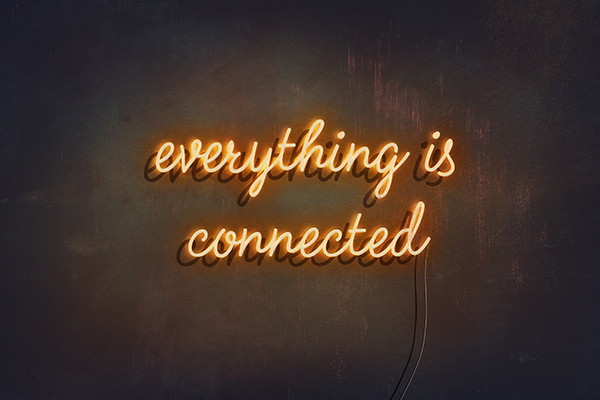In this article, Charlie Scott breaks down the mystery of strategy, and how to ensure your strategy is a living reality.
A common mystery
Chief Executives rely on their management teams to make strategy happen, from Deputy Directors, to Heads of Departments, to functional Managers, to Team Leaders. Managers need to support their teams to deliver on organisational goals and ambitions. Yet, almost every manager we meet on our training programmes has one aim in common: they tell us they need to be more strategic. Or rather, they tell us they have been told to be more strategic. The problem many of them face is that ‘being strategic’ is very mysterious – an intangible quality that seems out of reach. They know that it is linked to leadership, and that they are supposed to be inspiring others. However, it’s hard to inspire other people when you’re not quite sure what it involves yourself.
Your Golden Thread
Let’s start by breaking down what a strategy actually is. Strategy is a plan – a big picture plan – about what you are aiming to achieve, what you do, why you do it and how you are going to go about doing it. Strategy really is that simple. Imagine a strong thread. It connects what you do every day to the world you are trying to create. It binds your actions and decisions together. This thread is Golden, it shines through all the day-to-day emails, calls, meetings, Zooms and everything that you do.

We find it useful to think about organisational strategy as three strands and your Golden Thread binds them:
- Strategic Impulse – this is your vision and direction of travel – where you want to get to and what life will be like if you get there. Organisations even in the same sector, have different impulses. For example, climate change impulses vary a great deal: saving forests, reducing air pollution, global campaigning, local wildlife sites, animal protection, countryside conservation.
- Strategic Architecture – how your organisation is set up and structured, how different elements of the organisation work together. This needs to be fit for purpose, and so is informed by your impulse and how you will achieve your vision. If you are campaigning on a global scale, you need a global structure. If you are protecting a local site, you need to be a local expert in that area, working in partnership with local stakeholders.
- Strategic Learning – how you will know if your impulse is being delivered. Your vision and the work you do to achieve it will determine how quickly or slowly you will see the impact you are trying to make in the world. If you are trying to reverse climate change, you may need annual indicators over decades. If you are looking to rebuild a local area, you may need one or two seasons to measure the impact.
Being strategic is all about how you build on these three strands. The impulse of your Fundraising and Campaigning teams may well be different, but they need to relate to each other. Their architecture and learning cycles may be different, but still need to connect. Your Golden Thread is the connection that binds your work today to your vision for the future. It also connects functions and people together, as their work may be different, but they share the same vision.
As a manager, ‘being strategic’ begins with working out what your impulse, architecture and learning cycle needs to be, and then using the Golden Thread to connect what you do every day to these three strands. To stay focused on your vision and the change you want to make in the world, your Golden Thread needs to be kept alive. If you cannot see how what you are doing every single day, helps you to get to your vision, then ask yourself: why am I doing this?
The Golden Thread in everything you do

Being strategic is also about having a tenacious resolve to get to your vision. This tenacity involves:
- Scanning: constantly looking at your external environment and the way in which it may impact on your strategy, analysing what is happening around you both in terms of opportunities and potential barriers. For example: how does emerging AI technology help us better protect our local green spaces? What does the pandemic mean for local green spaces?
- Monitoring: asking constantly what is working, and what is not working, and what has been learned. For example, what have we learned about the impact our latest campaign is having on how young people engage with the local green spaces? What have learned about our approach to campaigning?
- Revising: what you should and shouldn’t be doing and being systematic in doing so. For example, are there activities we are engaged in that no longer support our local green spaces protection goals? What are our stakeholders telling us to do differently? Are they right?
- Innovating: pushing to find improvements and better ways to reach your vision, not just innovation for the sake of it. Being open and prepared to change. For example, what positives have there been from lockdown to change how people relate to their local green spaces? What might we need to do as lockdown eases to keep these positives going?
- Including: collaborating with others and breaking down silos, ensuring people are included in and represented in your strategic thinking, listening and learning from a wide range of experiences. For example, how can we make sure our green spaces are accessible for everyone? What stops some groups from using these spaces? How can we change that?
- Inspiring: making strategy happen by engaging and encouraging others, so that they deliver it as it if it were their own. For example, what can we do to inspire people to care for local green spaces because they want to – and not because they have to? Why do people who work here care about local green spaces?
Keep your Golden Thread alive during change
A strategy is not static, your ambitions and goals may change over time. However, your vision will stay the same, and your Golden Thread, connecting you to your vision, is the rope that holds you firm and steady when everything changes.
In this way, your Golden Thread also inspires others. If they see, appreciate, and feel connected to the Golden Thread, they will make strategy happen. They will embrace change and hold onto that rope. Being strategic is also about taking practical steps to inspire others:
- Share your Golden Thread with your team – help them connect their everyday tasks to the vision you will create together
- Start meetings by reiterating it – keep it running through every conversation
- Use it to prioritise time and resources – make decisions with it and be rigorous in saying no to time taking you away from it
- Use it to motivate people – celebrate achievements by linking effort and results to it
- Look out for subtle signs that people are losing the thread – catch it early
- Repeatedly tell stories about what life will be like if we get this right – help others to keep being tenacious too, so they can see their hard work will be worth it
Being strategic doesn’t need to be a big mystery. Your strategy is the Golden Thread that brings the many strands of your work together. By helping others to connect to it, you keep your strategy alive and others will own it.
We have a range of tools and techniques available to help you find your Golden Thread, keep it alive, and inspire others with it. If you would like to know more, call to speak to one of our experienced consultants on 020 7978 1516, contact us online or email Charlie directly at c.scott@managementcentre.co.uk
Share How to be Strategic – use a Golden Thread

